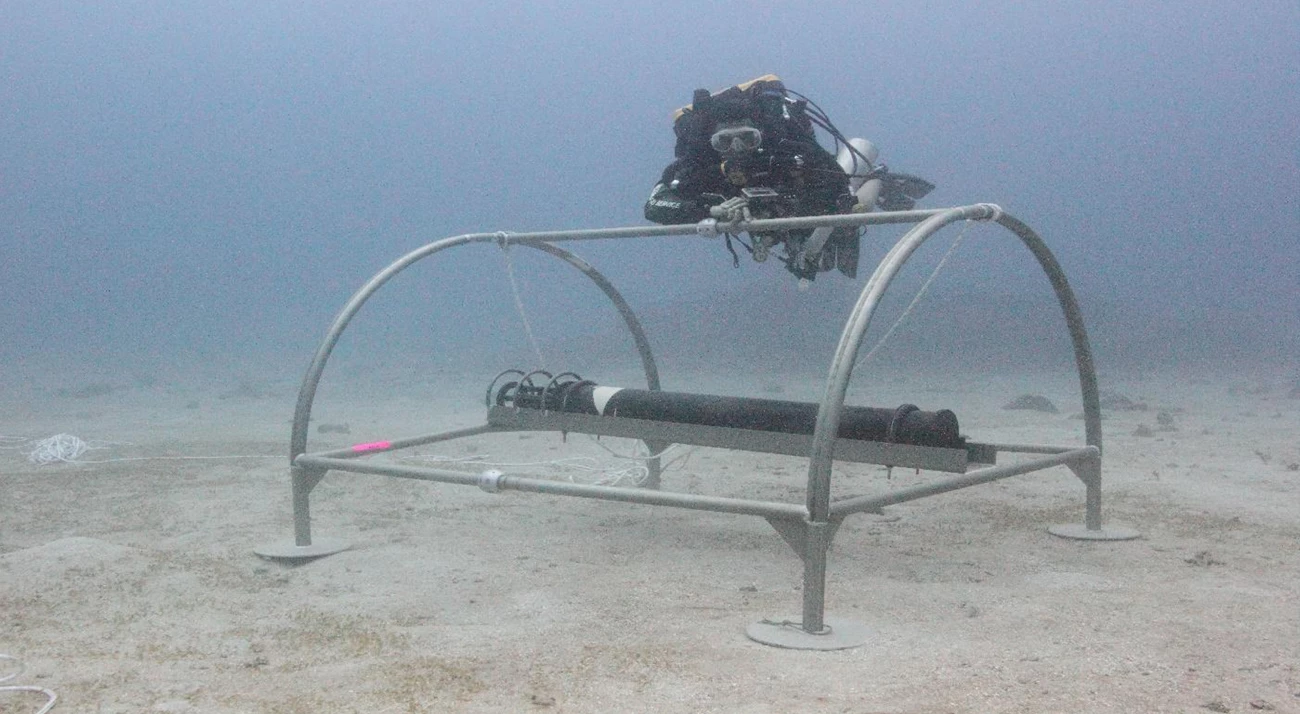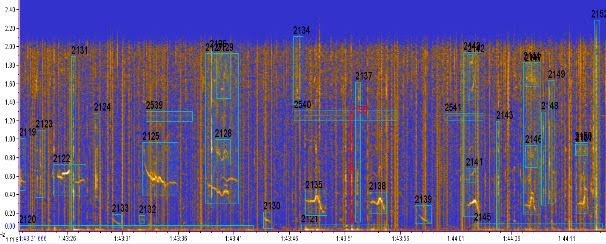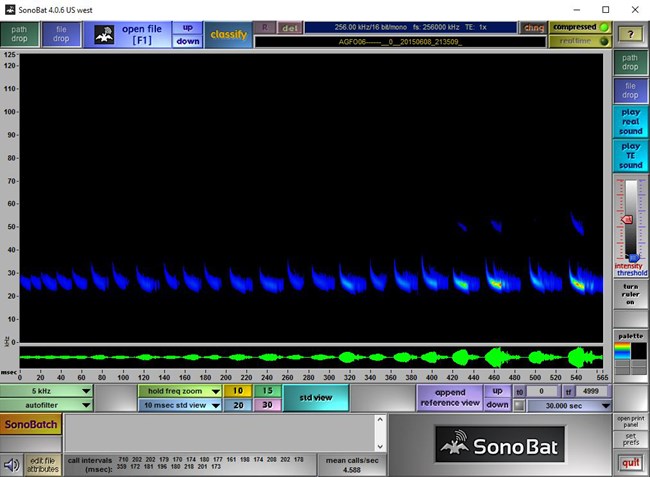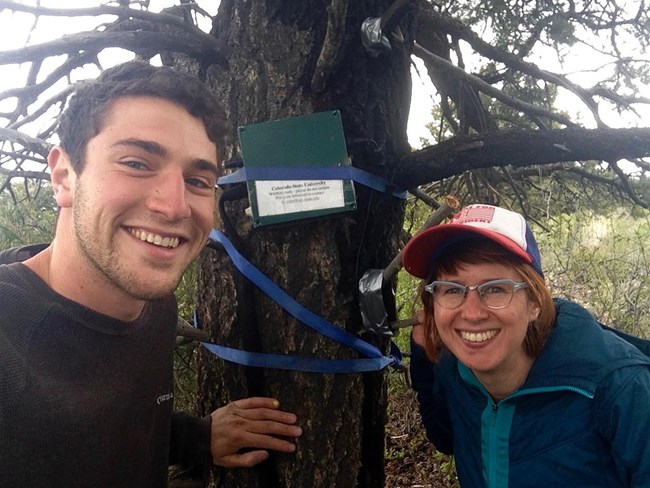Last updated: May 9, 2017
Article
Undergraduate scholars advance acoustic research in national parks

NPS
The National Park Service has a long history of partnering with universities to advance scholarship and science-based stewardship. Engaging faculty, students, and conservation professionals across disciplines, the alliances provide opportunities for research and fieldwork that mutually enrich the exchange.
In one such partnership between the NPS Natural Sounds & Night Skies Division and the Colorado State University Sound and Light Ecology Team, undergraduate students work in the CSU Listening Lab to discover and assess a spectrum of acoustical data collected in national parks around the country. The primary goal of the lab is to aid in the understanding of natural soundscapes by providing a resource to efficiently analyze the thousands of hours of natural and anthropogenic, or human-caused sounds, recorded each year. Park managers use this information to make informed management decisions about their park’s soundscapes, or acoustic environments. Students working in the lab have additional opportunities to use the data for designing unique studies that answer their own questions about park soundscapes. In many cases their work is presented at undergraduate focused research conferences. This spring semester three CSU students—all seniors from the Department of Fish, Wildlife, and Conservation Biology—presented their projects and were recognized for their efforts:
In one such partnership between the NPS Natural Sounds & Night Skies Division and the Colorado State University Sound and Light Ecology Team, undergraduate students work in the CSU Listening Lab to discover and assess a spectrum of acoustical data collected in national parks around the country. The primary goal of the lab is to aid in the understanding of natural soundscapes by providing a resource to efficiently analyze the thousands of hours of natural and anthropogenic, or human-caused sounds, recorded each year. Park managers use this information to make informed management decisions about their park’s soundscapes, or acoustic environments. Students working in the lab have additional opportunities to use the data for designing unique studies that answer their own questions about park soundscapes. In many cases their work is presented at undergraduate focused research conferences. This spring semester three CSU students—all seniors from the Department of Fish, Wildlife, and Conservation Biology—presented their projects and were recognized for their efforts:

Abigail Crowder
“Most acoustic research has focused on terrestrial habitat, not marine settings,” said Crowder. “It was fascinating for me to hear the variety of underwater sounds in the American Samoa marine ecosystem. The research gives important information about what species are present or absent, how they are interacting, and how human sounds might be affecting their environment.”

Tabitha Gulley
“There is a lot we don’t know about bat calls because they are ultrasonic,” said Gulley. “Working with acoustic data has made me realize how important this research is for understanding bats and helping to conserve their habitat."

Photo courtesy of Trent Hawkins
“As anthropogenic noise increases, the ability to quantify damage to wildlife ecosystems is becoming increasingly essential. Bat species are especially vulnerable, and acoustic ecology is a non-invasive way to monitor their populations,” said Hawkins. “Working in the Listening Lab has given me invaluable field and lab skills that I will use throughout my career to advance bat conservation.”
Discover all the interesting research and outreach coming out of this lab, including a new study written by researchers at Colorado State University and the National Park Service and published in the journal Science, which shows that even though parks and protected areas continue to be quieter than surrounding lands, noise now intrudes into remote areas, including some national parks.
Learn more about what the National Park Service is doing to protect natural sounds.
Posted by Julie West, commumications specialist, Natural Sounds and Night Skies Division
Tags
- national park of american samoa
- natural sounds
- natural sounds and nigh skies division
- acoustic monitoring
- acoustical monitoring
- acoustics
- sound
- bat calls
- bats
- noise pollution
- anthropogenic
- national park service
- science101
- parkscience
- biodiversity
- oceanic
- oceanic conservation
- marine life
- oceans
- marine
- underwater
- underwater acoustics
- undergraduate scholars
- partners
- partnerships
- students
- students in parks
- research studies
- research
- nsnsd
- sound and light ecology team
- listening lab
